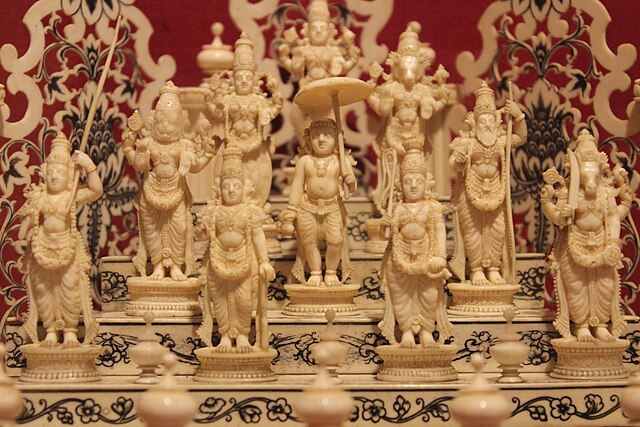Kurma, is the second avatar of the Hindu preserver deity, Vishnu. Originating in Vedic literature such as the Yajurveda as being synonymous with the Saptarishi called Kashyapa, Kurma is most commonly associated in post-Vedic literature such as the Puranas. He prominently appears in the legend of the churning of the Ocean of Milk, referred to as the Samudra Manthana. Along with being synonymous with Akupara, the World-Turtle supporting the Earth, Kurma is listed as the second of the Dashavatara, which are the ten principal incarnations of Vishnu.
Kurma avatar by Raja Ravi Varma
Kurmavatara, tortoise incarnation of Vishnu, from Garhwa, Prayagraj District
Kurma with Sesa holding the Earth (left), Varaha (right), and Vishnu (below, centre).
Kashyapa Muni, one of the Saptarishi (Seven Rishis) during the reign of the sixth (and current) Manu, Chakshusha.
The Dashavatara are the ten primary avatars of Vishnu, a principal Hindu god. Vishnu is said to descend in the form of an avatar to restore cosmic order. The word Dashavatara derives from daśa, meaning "ten", and avatāra, roughly equivalent to "incarnation".
Hindu god Vishnu (centre) surrounded by his ten major avatars (Krishna-Buddha version). Anticlockwise from top left: Matsya; Kurma; Varaha; Narasimha; Vamana; Parashurama; Rama; Krishna; Buddha and Kalki
Vishnu surrounded by his avatars; artwork by Indra Sharma
Hindu god Vishnu's ten major avatars (Balarama-Krishna version) Dasavatara shrine, 18th century ivory (National Museum, New Delhi). From top descending: Matsya; Kurma; Varaha; Narasimha; Vamana; Parashurama; Rama; Balarama ; Krishna and Kalki.
1st to 5th of the Dashavataras on Udupi Sri Krishna Matha gopuram, Karnataka.



